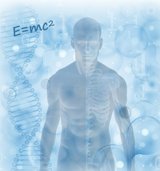Health and Wellness
Milk: Does a Body Good. Right!?
Alone among mammals, only humans continue to drink milk into adulthood, and only humans purposely drink the milk of other mammals. As a rule, adult humans don’t drink human milk but continue to consume milk and dairy products made from the milk of other species.
Traditionally, nutritionists have strongly recommended dairy foods as a crucial part of a balanced diet, from stressing the benefits of exclusively breastfeeding infants human milk,[1] to providing guidelines for daily consumption of dairy foods for children and adults.[2] Even as the latest version of the Dietary Guidelines for Americans (DGA)[3] moves away from the familiar “food pyramid” to take a more personalized approach to diet that embraces personal and cultural differences, dairy remains a cornerstone of their key recommendations for a healthy eating pattern.[4]
In promoting the need for milk and dairy products for a balanced diet, nutritionists are primarily touting their supposedly critical importance in establishing adequate calcium and vitamin D levels. According to well-respected researcher Robert P. Heaney, MD, health care providers need to understand that “calcium is a crucial part of dietary adequacy and that it is difficult to achieve that adequacy for most of their patients if dairy foods are not consumed in adequate quantity.”[5]
Milk and dairy foods are particularly encouraged for the elderly, ostensibly to provide adequate levels of calcium and vitamin D (to prevent broken bones), as well as protein and glutathione production (for general health) that seniors may not get otherwise.[6] In fact, reimbursement for meals served through U.S. Department of Agriculture (USDA) congregate food programs requires that milk be served at two meals and yogurt or another dairy option be provided at the third meal and the daily snack.[7]
On the other hand, functional and alternative medicine practitioners recommend a “no” dairy diet?
You may have heard it at some point in your life, “You should cut out dairy.” The question is why?
Isn’t dairy good for you?
I’m guessing you remember the days where the headlines plastered everywhere saying that adults should drink at least 3 cups of milk daily to get enough calcium (+ other nutrients) to protect our bones and overall health? As mentioned, it’s an approved nutritional guide after all…
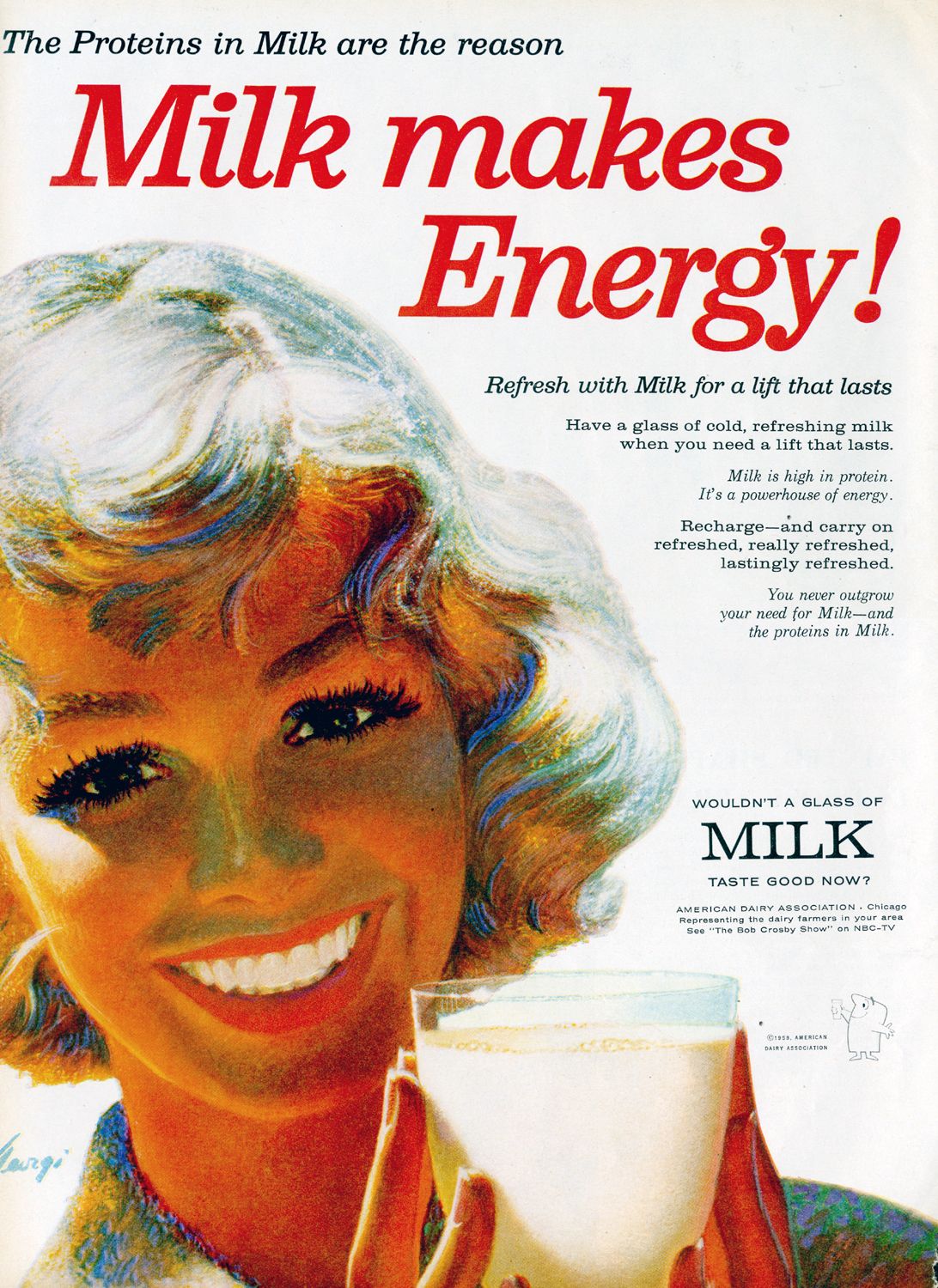

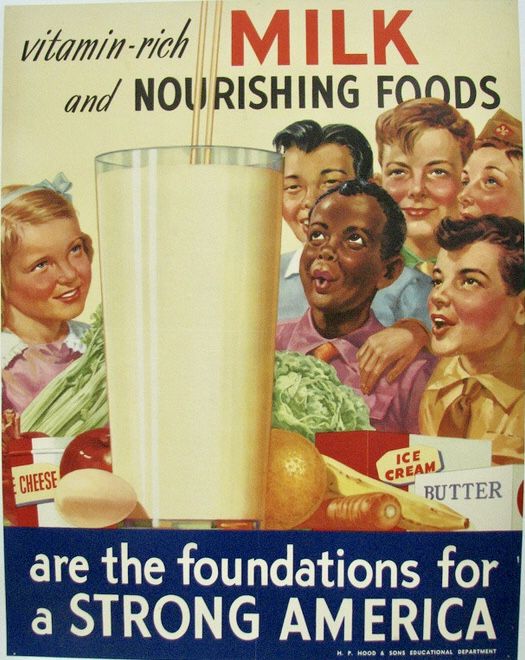
Let’s dive deeper into this subject and discover why dairy consumption is often not recommended by functional and alternative practitioners.
What's dairy contain that could harm your health?
- Lactose (milk sugar)
- Milk proteins: Casein, Whey and Lactalbumin
- Dozens of reproductive hormones, antibiotics, and growth factors such as IGF-1 (insulin-like growth factor)
- Pesticides, polychlorinated biphenyls (PCBs), and dioxins are other examples of contaminants found in milk.
- Pus in Milk
- Calcium
- Milk contains protease inhibitors that may contribute to the development of a leaky gut.
1. How is lactose digested?
Lactose digestion occurs in the small intestine with the help of the enzyme known as lactase. Lactase breaks down lactose into the monosaccharide’s galactose and glucose, which makes them available for absorption.
When you do not produce enough lactase to sufficiently digest lactose then you can become lactose intolerance.
Lactose intolerance results in the expression of physical symptoms such as abdominal bloating and cramps, diarrhea and gas.
Conventional science assumes that including milk and dairy in our daily diet is a good thing. Yet, the majority of adults globally are lactose intolerant,[8] and as many as 15 per cent of infants may be allergic to milk proteins as well.[9]
Nearly all infants and small children produce sufficient amounts of lactase, the enzyme that allows them to digest and use lactose (milk sugar), but 75 percent of human adults (and 25 percent of Americans) do not. The results of lactase deficiency include such digestive symptoms as flatulence, bloating, cramps, and diarrhea.
According to one report, “approximately 70 percent of African Americans, 90 percent of Asian Americans, 53 percent of Mexican Americans, and 74 percent of Native Americans were lactose intolerant,” and lactase activity was also found to be severely decreased in those with an African, Asian, Native American, Arab, Jewish, Hispanic, Italian, or Greek backgrounds. Only some with Northern European or Mediterranean heritage were found to retain any significant degree of lactase activity, suggesting a genetic mutation in these groups rather than a “norm.”[10]
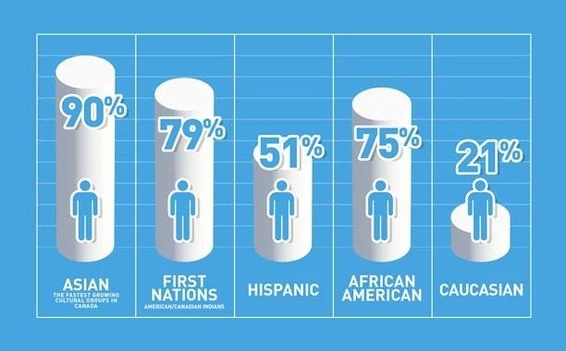
In addition to the natural development of lactose intolerance with age, pasteurization has also played a role in humans’ inability to digest milk. Pasteurization destroys not only potentially harmful pathogens in milk but also the beneficial bacteria, vitamins and enzymes present in raw milk and changes the structure of the natural calcium, rendering it insoluble and essentially unusable for humans.[11]
2. Sensitivities and allergic reactions to the milk proteins: Casein and Whey
First of all, I would like to explain the difference between sensitivities and a real allergy. There are currently three main explanations for the negative reactions that occur in the body from specific foods. These reactions are classified as IgE, non-IgE, or IgG-mediated. The “Ig” in these abbreviations stand for “Immunoglobulin”. Immunoglobulins are important regulatory proteins in the immune system that regulate inflammatory reactions to strategically focus the immune system on specific targets such as viruses and foreign bacteria.
In a classic allergic reaction, which can be occur by eating certain foods such as peanuts, fish etc. we are looking at an IgE- mediated process. These reactions can be life-threatening and happen immediately after eating allergenic foods.
Non IgE reactions are typically isolated to the gut and result in gas/bloating, possible diarrhoea, which overtime results in damage to the GI- tract.
Finally, the primary culprit in food sensitivity developments is a non- IgG- mediated reaction. These reactions can cause systemic problems in the body over time leading to low grade inflammation. The longer you are consuming the food the more you begin experiencing symptoms.
Typical symptoms of food sensitivities are:
- Moodiness
- Brain Fog
- Food Cravings
- Headaches
- Fatigue
- Heart Burn
- Joint Pain
- Gas/Bloating
- Acne or Eczema
- Leaky gut
- Autoimmunity
In contrast to the enzyme deficiency associated with lactose intolerance, an allergy to milk proteins is an immune system reaction in which the body attacks the milk protein (either casein or whey) as a foreign invader. Among the most common of food allergies, cow’s milk protein allergies (CMPA) are most prevalent among children, especially newborns. Some have attributed the increased incidence of milk allergies to the common substitution of cow’s milk (in infant formula) for human breast milk.[12] Symptoms of an allergic reaction to milk may include hives, upset stomach, vomiting, bloody stools and, in some cases, life-threatening anaphylactic shock.[13]
Although about 80 per cent of those with CMPA grow out of their sensitivity by age 16, it can present a serious feeding and health challenge for babies and small children. Even breastfeeding mothers of babies with CMPA may be warned to curtail consumption of dairy products to avoid a reaction in their sensitive infants.
Insulin-dependent (type 1) diabetes is linked to consumption of dairy products (milk protein) in infancy. A 2001 Finnish study of nearly 3,000 infants with genetically increased risk for developing diabetes showed that early introduction of cow’s milk increased susceptibility to type 1 diabetes.
The main protein present in milk is casein, a common ingredient in many childhood vaccines.[14] Milk proteins in general are often used as stabilizers or emulsifiers in vaccines and some may include “hidden milk proteins” as well. As reported by Franceschini et al in the journal Clinical and Translational Medicine, “Anaphylactic reactions have been reported in milk and egg-allergic children after MMR vaccination.”[15]
3. IGF-1 or insulin-like growth factor
The consumption of milk increases the hormone IGF-1 or insulin- like growth factor, which stimulates cell cancer growth. Studies in diverse populations have shown a strong and consistent link between IGF-1 in the blood and prostate cancer risk.
A study of 1,893 women diagnosed with early-stage invasive breast cancer revealed that eating more high-fat dairy products was linked to higher mortality (death) rates.
The consumption of dairy products may also contribute development of ovarian cancer. The relationship between dairy products and ovarian cancer may be due to the breakdown of the milk sugar (lactose) into galactose, a sugar which may be toxic to ovarian cells.
4. Pesticides, polychlorinated biphenyls (PCBs), and dioxins
Pesticides, polychlorinated biphenyls (PCBs), and dioxins are other examples of contaminants found in milk. Dairy products contribute to one-fourth to one-half of the dietary intake of total dioxins. All these toxins tend to build up in the body over time. Eventually, this can harm the immune, reproductive, and nervous systems. Moreover, PCBs and dioxins have been linked to cancer.
It has been reported that as many as 20 different chemicals including painkillers, antibiotics and hormones were found in samples of milk from Spain and Morocco.[23][24] The researchers found that many drugs used to treat illnesses in animals and people turned up in their study, which looked at cow, goat and human breast milk samples and found the greatest contamination in the milk from cows. Saying that the “results highlight how man-made chemicals are now found throughout the food chain,” they surmised that some of the chemicals had been fed to the cows and some had entered the milk supply through contamination on the farm.[25]
5. Pus in Milk
The idea that there is pus in our milk supply would make just about anyone pause before drinking, which is why the idea has taken hold with many “anti-milk” groups. Many claim that the USDA “allows 135 million pus cells in a glass of milk.” Pus, however, is not actually a type of cell at all but a mixture of dead white blood cells, bacteria and dead skin cells. What are being referred to as “pus cells” are somatic cell counts (SCC), which measure the number of white blood cells—a natural byproduct of any animal-based food—in the milk. The USDA allowance for somatic cells amounts up to 750,000 cells/mL, though the national average reported in 2014 was much lower at 206,500 cells/mL.[21]
According to one dairy farmer defending the integrity of the dairy industry, “Dairy farmers are paid more money for milk that has a low SCC, if our cell count rises above normal levels they will dock the amount we get paid for our milk, if it rises even higher they stop taking our milk and we can’t sell it. So not only do we not want our cows to be sick, it would cost us a lot of money and could cost us our farms if we were to ignore a high SCC.”[22]
However, while it may be true that white blood cells aren’t an unusual presence in animal products, it is also true that they represent the immune system’s “fighter cells” and their presence may indicate the possibility of infection, so the pus idea isn’t totally out of left field.
6. Calcium in dairy products
While prevention of osteoporosis has been a major selling factor in trying to get older people (women in particular) to increase their milk intake, evidence does not support the recommendation. Comparatively speaking, the fracture rate is much lower in countries such as Japan, India, and Peru, where calcium intake is generally much lower than it is in the U.S.[16]
Many factors can affect bone integrity, including genetics, diet, and lifestyle factors like smoking and alcohol intake. Preliminary findings have even suggested that excess consumption of milk may be associated with an increased risk of broken bones—as well as heart disease, cancer, and death—among older women.[17]
A prospective cohort study did a 22-year follow-up with more than 96,000 people found that the more milk men consume as teenagers, the more bone fractures they experience as adults.
Another large study published in The British Medical Journal on dairy and bone health showed that milk did not prove to reduce the risk of fractures. To avoid osteoporosis, we need not only calcium but also Vitamin D and Vitamin K. Without enough Vitamin D, only 10-15% of the calcium you consume is absorbed and milk does not naturally contain Vitamin D.
Calorie for calorie, milk is not even among the best sources for dietary calcium. As Joseph Mercola, DO explains, “milk” and “calcium” are “often used interchangeably in the popular press… [but] no standard other than that of the National Dairy Council considers it the best calcium source.” Other good dietary sources of calcium include dark-green leafy vegetables like spinach, kale, and vegetable greens; dry beans; sesame seeds and almonds; oily fish like salmon and sardines; rhubarb; and okra, among others.[18]
Certain green vegetables such as kale and broccoli are especially beneficial for bones because they contain both Calcium and Vitamin K.
7. Protease inhibitors wreak the digestive tract
Protease inhibitors are compounds designed to neutralize the digestive enzymes that would normally degrade the proteins (and toxins) found in milk (and other foods) into their individual component amino acids. However, when protease inhibitors are present in the digestive tract, it affects degradation of all proteins present at that time. When the body senses the need to increase protein digestion, the pancreas secretes more digestive enzymes into the small intestine. Because some digestive enzymes are being inhibited (the proteases which break down protein) while others are not, the balance between the different digestive enzymes is thrown off. One enzyme that ends up in excessive quantities during this process is trypsin, an enzyme that is very good at destroying the connections between cells. If there is a large concentration of trypsin in the small intestine, it can weaken the connections between the enterocytes, creating a pathway for the contents of the gut to leak into the blood stream. To make matters worse, in the presence of an already leaky gut, incompletely digested proteins that cross the enterocyte layer stimulate the resident immune cells of the gut to release inflammatory cytokines and produce antibodies. The result is generalized and/or specific inflammation.

Not All Milk Is Created Equal
As the prevalence of lactose intolerance becomes more widely recognized, people are turning to alternatives to cows’ milk for their dairy fix. In recent years, such substitutes as nut milks, soymilk, hemp milk and rice milk have found a strong market.
Even among animal milks, not all milks are the same. Many people who cannot tolerate cows’ milk are able to drink goats’ milk without trouble. That’s because the fat globules in goats’ milk are about a fifth of the size of those in cows’ milk, among other differences. Similarly, there are distinctive differences in the milk of other animals used by humans worldwide.
Americans may be fixated primarily on cow’s milk, but animals that provide milk for much of the rest of the world include the aforementioned goat as well as sheep, camel, yak, water buffalo, reindeer and elk. Fermented horse milk creates a mildly alcoholic beverage called kumis that is popular in some parts.[19] For the adventurous, several non-bovine dairy products are beginning to be available in the United States.[20] Choices may become more urgently sought after as questions are surface about the integrity of the commercial dairy industry.
Of all the dairy products, what’s the lesser evil?
Butter. And better yet, ghee.
Let me explain why.
Butter has some benefits:
- Essential elements (such as copper, iodine, manganese and zinc…)
- Fat-soluble vitamins (such as vitamin A, D, K2)
- Healthy fats (We rely on fat for brain development and energy – which butter does indeed supply. Butter contains arachidonic (AA) and docosahexaenoic (DHA) acids. The role of DHA and AA in neurogenesis and brain development throughout the life cycle is fundamental. In addition, butter provides short and medium chain fatty acids as well as other omega fats which support your immune system)
Butter also has some problems:
- Casein is found in butter – which as discussed above can be problematic.
- Grain-fed conventional butter (these cows are given hormones and antibiotics which ends up in “butter” – which I wouldn’t recommend)
- Butter and sugar – increase inflammation
If you’re going to consume butter – choose only the best organic grass-fed butter. You want cows grazing on sunny green pastures. This butter has higher fat-soluble vitamins, better healthy fat balance.
But what’s even better than butter… that’s ghee!
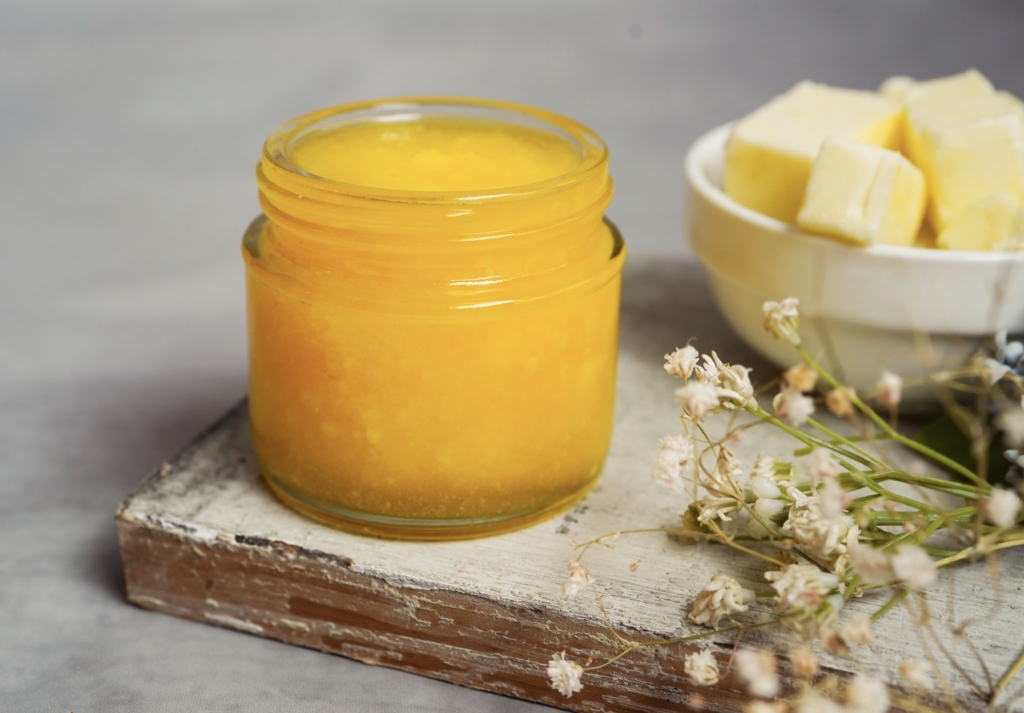
Grass fed ghee
First of all, the beta-casein is removed, leaving just the grass-fed clarified butter fat that contains fat-soluble vitamins. For the majority of those eating a Western diet, vitamins A, D, and K2 are all at insufficient levels and ghee just happens to be one of the best ways to incorporate them into your diet. Because it’s a healthy fat source derived from animals, this also means that is has a high smoking point. Most conventionally used oils have low oxidation levels and can form things like free radicals when heated that lead to disease. Ghee however is a great option to use when cooking and baking.
Healthy alternatives to dairy milk:
Coconut milk
Coconut is rich in healthy fats. It is also a fantastic source of magnesium, potassium, calcium, and iron. It is an excellent source of medium-chain triglycerides (MCTs) that may help to balance your blood sugar levels, stabilize your microbiome, lower your appetite, and help you lose weight. Coconut milk also offers anti-inflammatory and antibiotic benefits.
Almond milk
Almond milk has a very creamy texture and is rich in magnesium, riboflavin, thiamin, riboflavin and plant phytosterols. This may help to balance your blood sugar levels, lower bad cholesterol, reduce triglycerides, and protect your heart.
Cashew milk
If you like almond milk, you’ll probably enjoy Cashew milk. Cashew milk is also a great source of healthy fats, plant phytosterols, protein, magnesium, potassium, and iron. It may lower inflammation and boost your immune system.
Conclusion
Milk and dairy products are not necessary in your diet and can even be harmful to health. There are plenty of alternatives for staying healthy and keeping bones strong that are less recognized or disregarded by conventional science and can help you meet your nutrient requirements with ease—and without the health risks associated with dairy products.
[1] World Health Organization. Exclusive Breastfeeding. WHO.int.
[2] Heaney RP. Dairy Intake, Dietary Adequacy, and Lactose Intolerance. Advances in Nutrition March 2013.
[3] U.S. Department of Health and Human Services and U.S. Department of Agriculture. 2015-2020 Dietary Guidelines for Americans. 8th Edition. Health.gov December 2015.
[4] Executive Summary: Dietary Guidelines 2015-1020. Health.gov. December 2015.
[5] See Footnote 2.
[6] Dairy Intake Is Associated With Brain Glutathione Concentration in Older Adults. Am J Clin Nutr February 2015.
[7] U.S. Department of Agriculture. Child and Adult Care Food Program (CACFP). Food and Nutrition Service Oct. 6, 2017.
[8] What is Lactose Intolerance? Physicians Committee for Responsible Medicine Aug. 15, 2011.
[9] Brill MD. Approach to Milk Protein Allergy in Infants. Can Fam Physician September 2008.
[10] See Footnote 8.
[11] Mercola J. The Milk Myth: What Your Body Really Needs. Mercola.com July 18, 2009.
[12] Rangel AHDH, Sales DC et al. Lactose intolerance and cow’s milk protein allergy. Food Science and Technology Jan. 19, 2016.
[13] American College of Allergy, Asthma & Immunology. Milk and Dairy Allergy.
[14] U.S. Centers for Disease Control and Prevention. Vaccine Excipients & Media Summary: Excipients Included in U.S. Vaccines, by Vaccine. CDC.gov Jan 6, 2017.
[15] Franceschini F, et al. Vaccination in Children With Allergy to Non Actie Vaccine Components. Clinical and Translational Medicine Feb. 14, 2015.
[16] Ware M. Health Benefits and Risks of Consuming Milk. Medical News Today Dec. 19, 2017.
[17] Thompson D. Is Milk Your Friend or Foe? WebMD Oct. 29, 2014.
[19] Phelan B. Others’ Milk. Slate July 24, 2012.
[20] O’Connell R. 10 Non-Cow Milk Products You Can Try. Mental Floss Jan. 5, 2016.
[21] Animal and Plant Health Inspection Service. NAHMS Dairy Studies. U.S. Department of Agriculture July 7, 2017.
[22] Is There Pus in Milk? Dairy Carrie Mar. 5, 2013.
[23] Derbyshire D. It’s Not all White: The Cocktail of up to 20 Chemicals in a Glass of Milk. Daily Mail July 7, 2011.
[24] Mercola J. Who Knew this Cocktail of up to 20 Chemicals Was in Your Glass of Milk?Mercola.com July 26, 2011.
[25] See Footnote 18.



